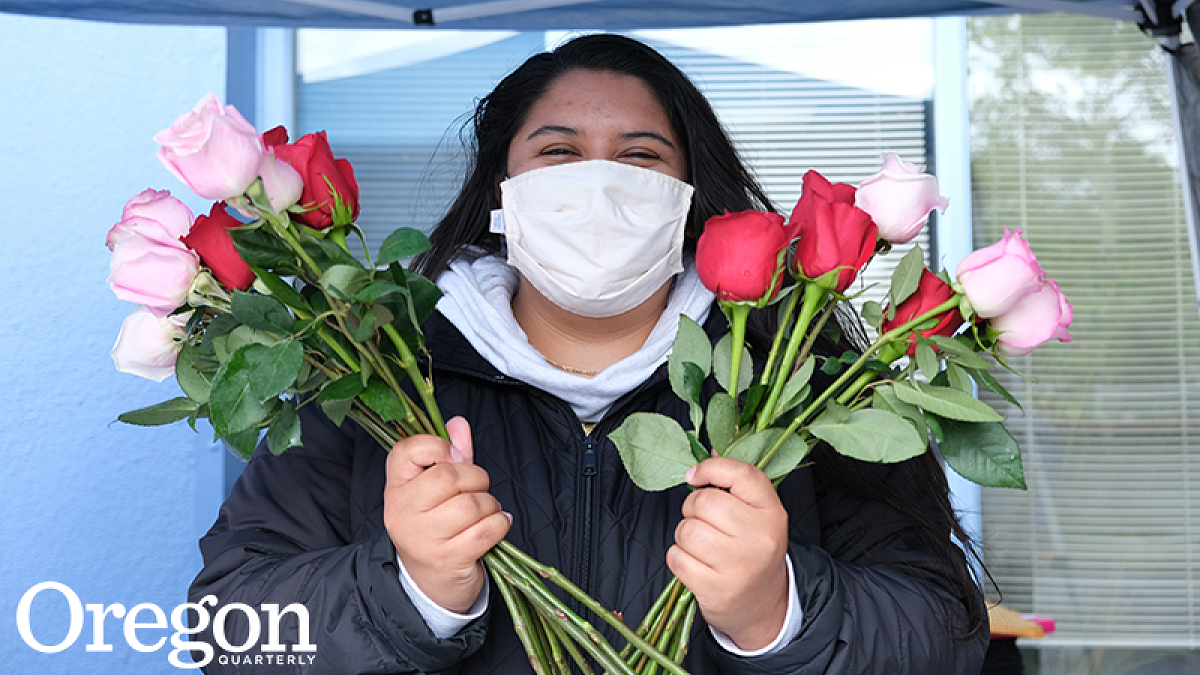Last year, University of Oregon researchers studied one aspect of the COVID-19 pandemic’s disproportionately high impact on Latinx people: participation in testing. They found that combining culturally informed outreach with well-located community testing sites tripled turnout.
The project’s success was driven by a university-wide collaboration that included data scientists from the UO’s Presidential Initiative in Data Science.
RELATED LINKS
Data science is the sophisticated analysis of massive, complicated data sets. The field—which draws from mathematics, statistics, computer science, and more—is increasingly essential across industry, from auto production to medicine to banking.
In 2018, the UO officially prioritized data science with the launch of the Data Science Initiative, driving improvement and expansion of data science efforts in support of undergraduate and graduate education and university research.
Then came the pandemic—and the UO responded by tapping its data science expertise to serve the general public, as well.
In spring 2020, the university launched the COVID-19 Monitoring and Assessment Program (MAP), expanding the UO’s testing capacity for the coronavirus and making testing available to anyone in Lane County. More than 260,000 tests were provided through August 2022.
Parts of the program rely on UO experts in genomics, prevention science, and other areas. Data scientists solve the information challenges—that is, processing each patient’s information and lab results, reporting this info to patients and health agencies across Oregon, and analyzing virus trends to inform response.
The creation of information systems for such a sweeping program could reasonably take months, say Emily Beck and Jake Searcy, assistant research professors of data science. But due to the urgency of the pandemic, the public service was successfully launched through the university in just weeks.
Beck and Searcy exemplify the applicability of data science across fields. Beck, who has expertise in evolutionary genomics and a PhD from the University of Iowa, works with researchers to apply data science to biological problems. Searcy, who graduated from the UO in 2012 with a PhD in high-energy particle physics, worked in artificial intelligence for Ford Motor Company before returning to the UO to expand the ability of researchers to use AI. Both realized quickly that their ability to manage data would help provide the very backbone of a countywide coronavirus testing system run through the university.
Says Beck: “Everything from data organization to file structure to building reproducible information-gathering processes—the types of things you don’t even think of as skills because you’re so used to doing them as a data scientist were desperately needed.”
To study ways to increase testing by Latinx groups, researchers developed a grant proposal that won support from the National Institutes of Health RADx UP program, which supports response to the pandemic in underrepresented populations.
The team was led by Dave DeGarmo, research professor of prevention science; Leslie Leve, Lorry Lokey Chair in Education and professor of prevention science; and Bill Cresko, Lorry Lokey Chair in Science and professor of biology. Working with community partners, researchers set up testing at sites across Oregon and developed ways to ensure patient data gathered onsite was transferred to the testing lab on campus.
In assessing the impact of culturally informed outreach efforts, data scientists integrated testing results with surveys on patient participation and residence. They also tabulated statistics for the Latinx patient group as a whole and subpopulations across the nine counties in the study.
Data scientists created a computer algorithm to recommend locations for testing sites based on the number of Latinx people in the area. But the project was ultimately successful, Searcy says, because researchers also listened to community input on important parts of the study, including the location of testing sites.
“It wasn’t ‘Here’s this algorithm with the right answer,’” Searcy says. “It was, ‘Here’s an interesting idea that came from this algorithm. What’s the right thing for your community?’”
—By Matt Cooper, managing editor, Oregon Quarterly
—Photo by Eliza Loera


